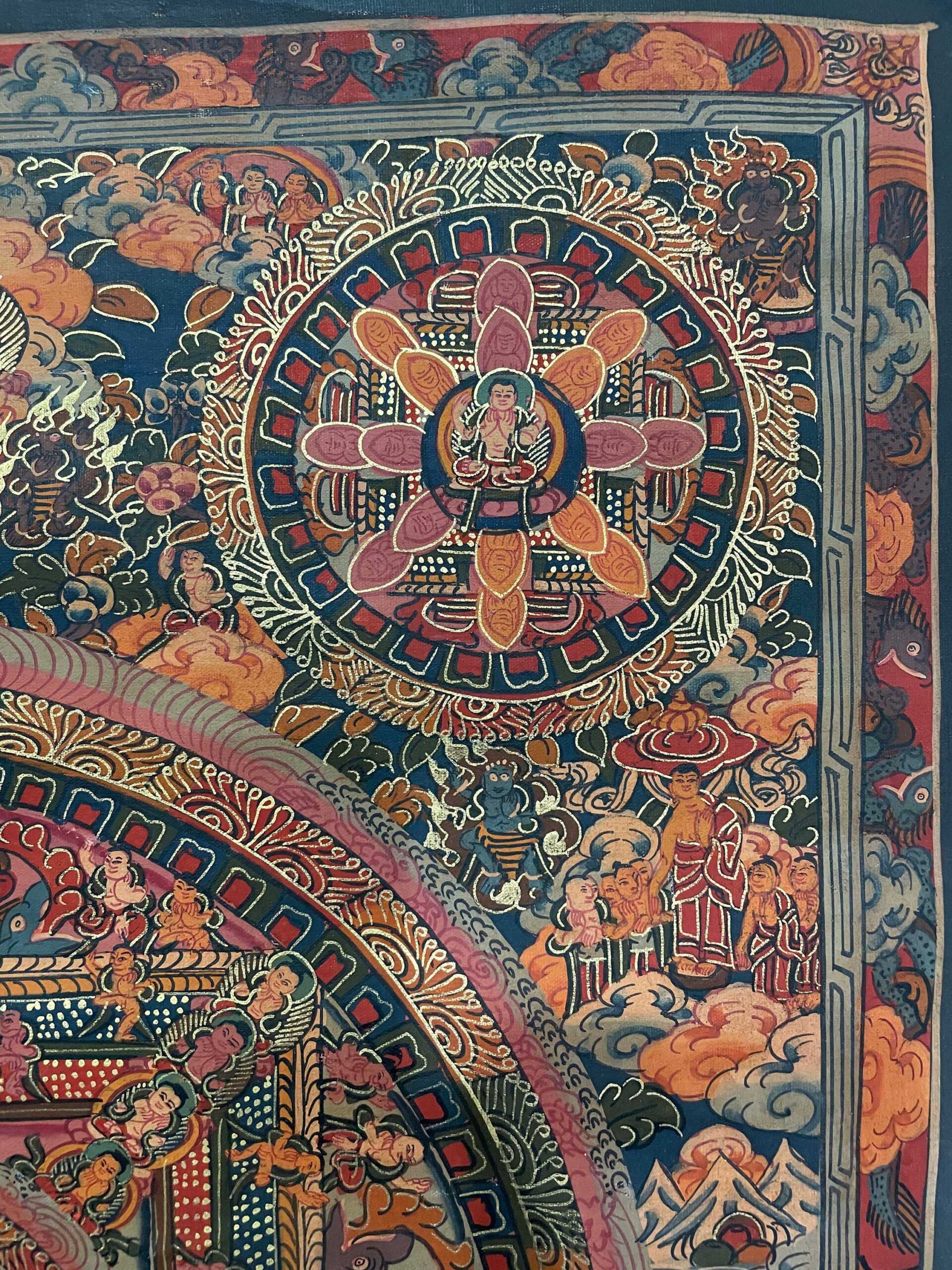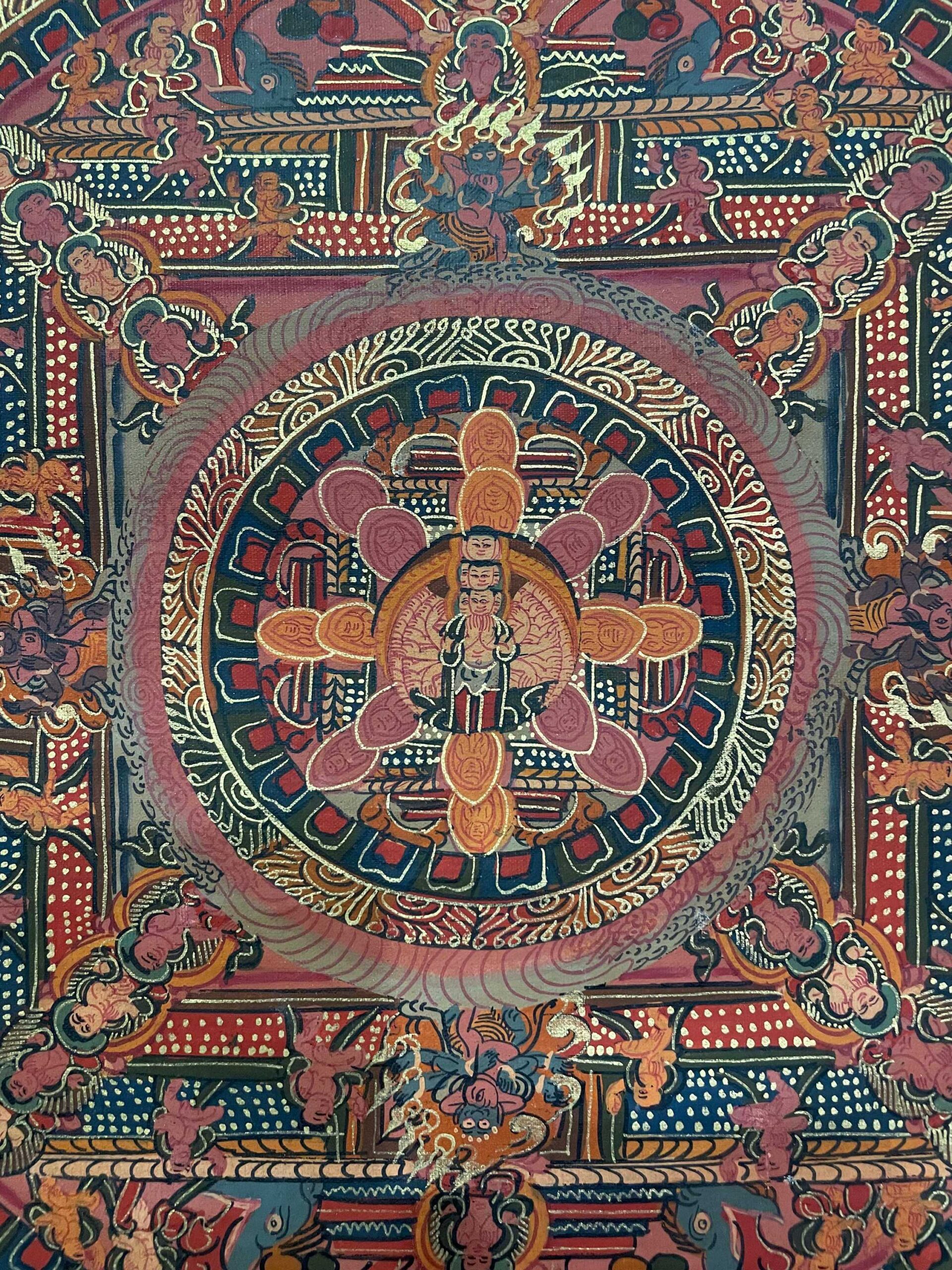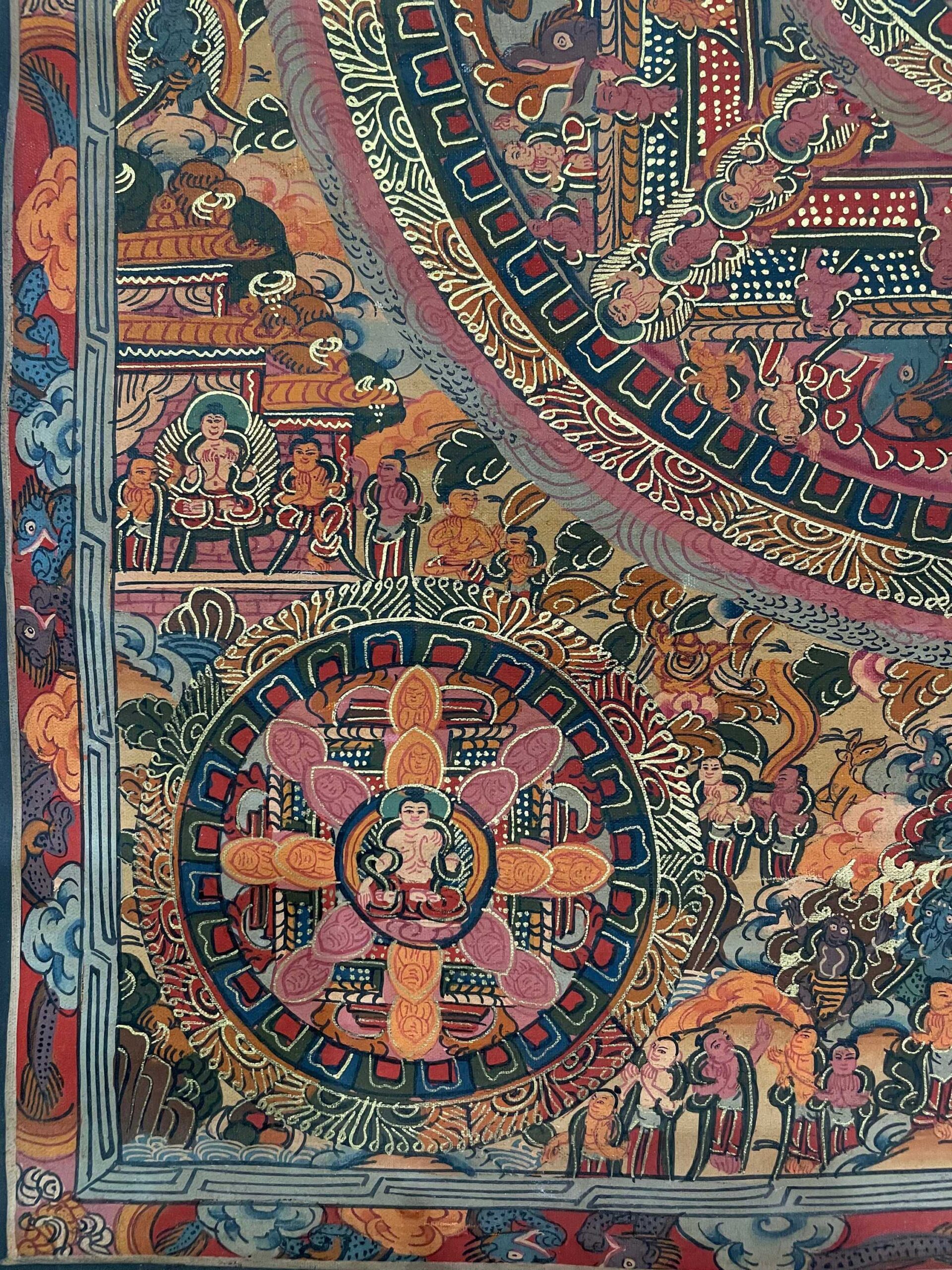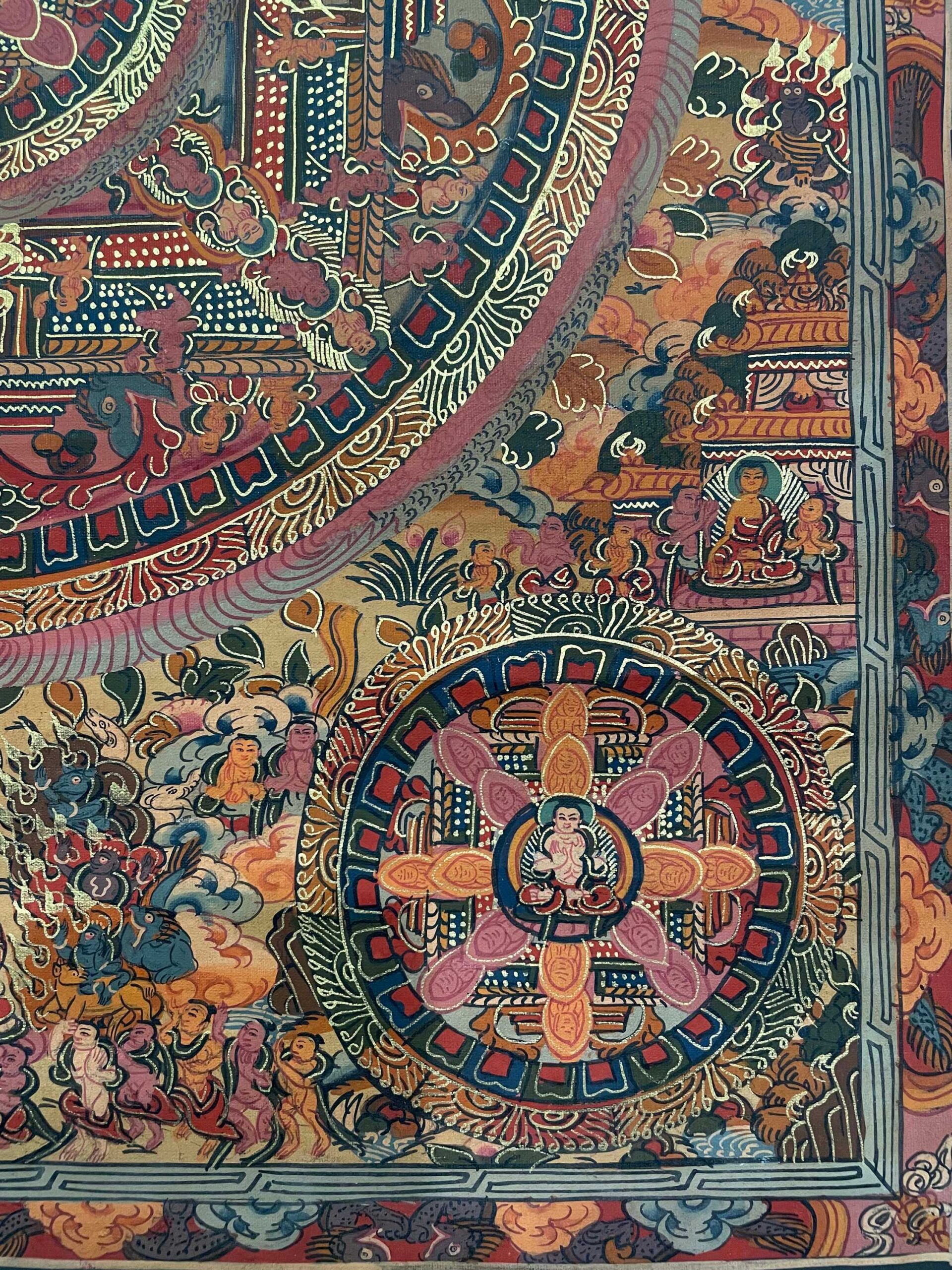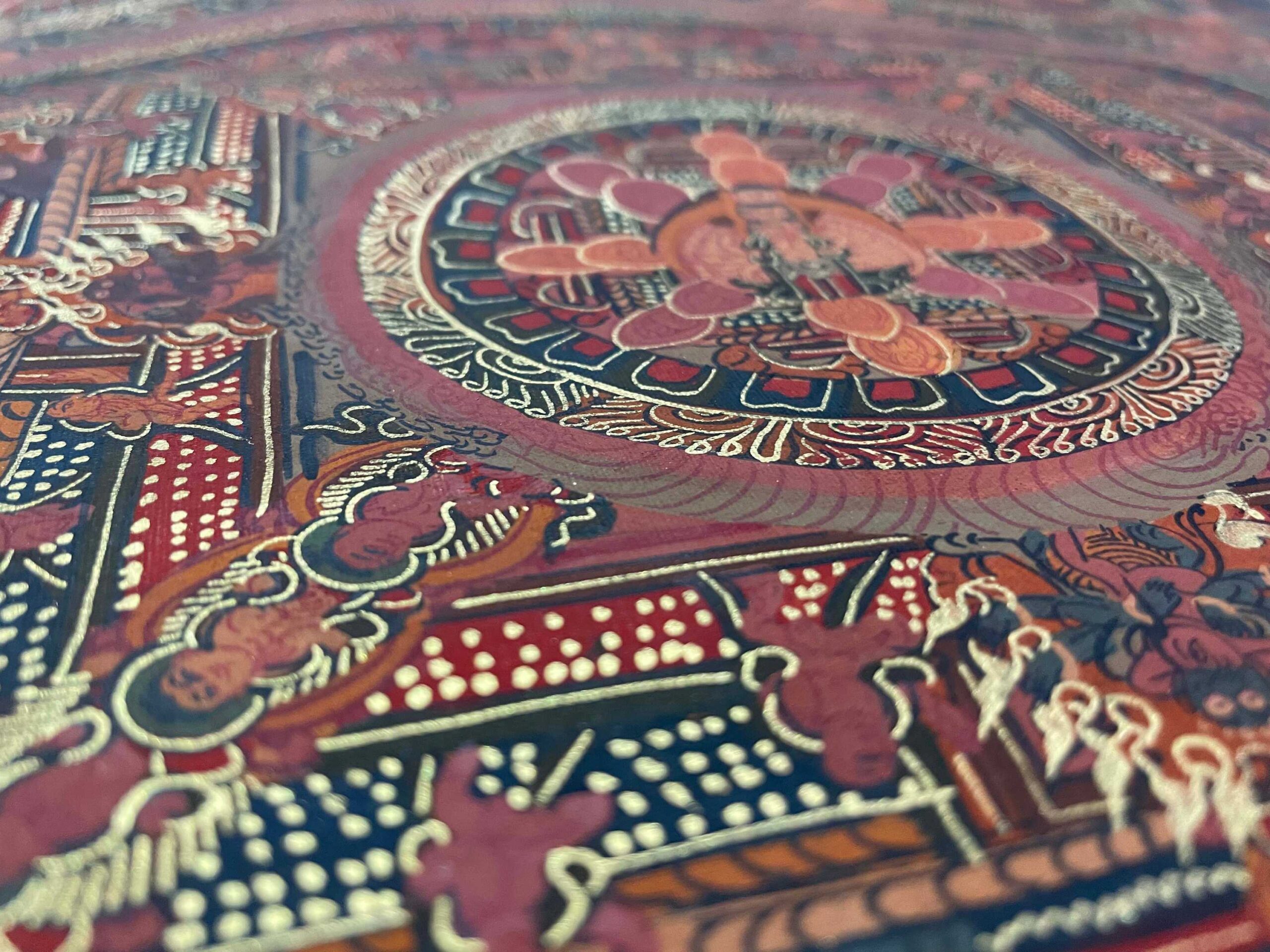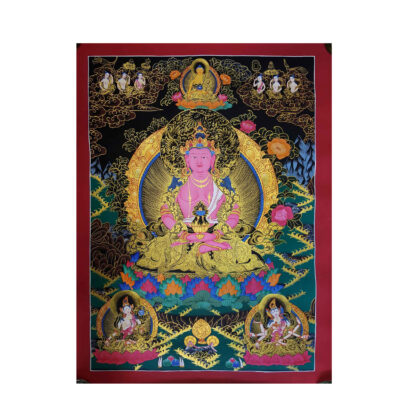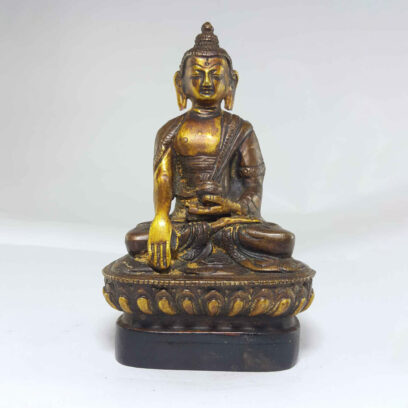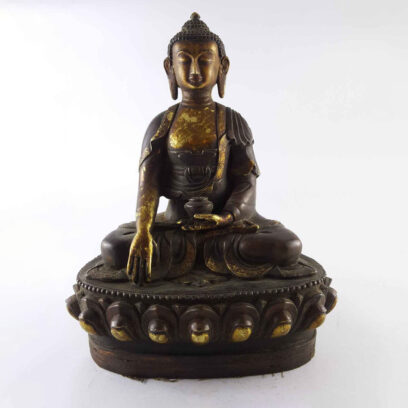Tibetan Buddhist Thangka Painting – Hand-Painted Pancha Buddha Mandala
- Item Code: HME25194
- Weight: 100 grams
- Size: 49 x 37 cm
- Material: Cotton Canvas & Natural Colors
- Availability: In Stock
Pancha Buddha: The Five Wisdom Tathagatas
The Five Dhyani Buddhas, widely known as the Pancha Buddha, represent five distinct qualities of Shakyamuni Buddha. These enlightened beings, also referred to as the Five Wisdom Tathagatas, are central figures in Vajrayana Buddhism, symbolizing the transformation of human delusions into spiritual wisdom. In Sanskrit, they are called the Five Conquerors or Victors, reflecting their role in guiding practitioners toward enlightenment.
The Pancha Buddhas—Vairochana, Akshobhaya, Amitabha, Ratnasambhava, and Amoghasiddhi—are deeply revered for their unique attributes and spiritual significance. Each Buddha is associated with a specific direction, wisdom, and symbolic representation:
- Vairochana (Center) – Represents the wisdom of dharmadhatu (the essence of all phenomena) and the transformation of ignorance into enlightenment. His mudra is the Dharmachakra Mudra (gesture of teaching).
- Akshobhaya (East) – Embodies the wisdom of mirror-like perception, transforming anger into wisdom. He is depicted with the Bhumisparsha Mudra (earth-touching gesture).
- Amitabha (West) – Symbolizes the wisdom of observation, converting attachment into compassion. His mudra is the Dhyana Mudra (meditation posture).
- Ratnasambhava (South) – Represents the wisdom of equanimity, transforming pride into generosity. He displays the Varada Mudra (gesture of giving).
- Amoghasiddhi (North) – Signifies the wisdom of accomplishment, converting jealousy into fearless action. His mudra is the Abhaya Mudra (gesture of fearlessness).
Each of these Buddhas presides over a different paradise in the five cardinal directions—center, east, west, north, and south—bringing balance and harmony to the universe. Their presence in Buddhist art, whether in statues, paintings, or Thangkas, signifies the unification of wisdom, protection, and enlightenment.
In Nepalese and Tibetan Buddhist traditions, the representation of the Five Buddhas is essential in both temples and households. A collection of Buddha statues is considered incomplete without a full set of the Pancha Buddha, demonstrating their profound spiritual significance. Their images are widely used in meditation, ritual practices, and temple iconography to guide devotees toward inner peace and ultimate liberation.


